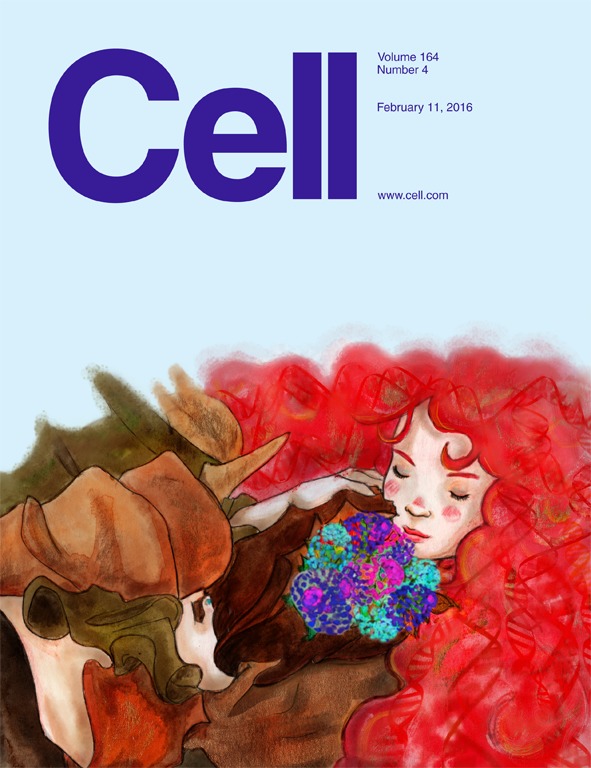- EN - English
- CN - 中文
Isolation of Latex Bead Phagosomes from Dictyostelium for in vitro Functional Assays
分离盘基网柄菌的乳胶珠吞噬体用于体外功能分析
发布: 2016年12月05日第6卷第23期 DOI: 10.21769/BioProtoc.2056 浏览次数: 10105
评审: Kristopher MarjonGeneviève BallAnonymous reviewer(s)
Abstract
We describe a protocol to purify latex bead phagosomes (LBPs) from Dictyostelium cells. These can be later used for various in vitro functional assays. For instance, we use these LBPs to understand the microtubule motor-driven transport on in vitro polymerized microtubules. Phagosomes are allowed to mature for defined periods inside cells before extraction for in vitro motility. These assays allow us to probe how lipids on the phagosome membrane recruit and organize motors, and also measure the motion and force generation resulting from underlying lipid-motor interactions. This provides a unique opportunity to interrogate native-like organelles using biophysical and biochemical assays, and understand the role of motor proteins in phagosome maturation and pathogen clearance.
Keywords: Phagosome maturation (吞噬体成熟)Background
In vitro reconstitution of biological processes is important to understand the molecular components and mechanisms underlying them. One such process is phagosome maturation, which is involved in degradation of pathogens taken up by macrophage cells of the immune system, and is also used as a process of nutrition in lower eukaryotes (Vieira et al., 2002). The transport of phagosomes on microtubules is intimately connected to their maturation (Blocker et al., 1997; Vieira et al., 2002). Notably, several intracellular pathogens disrupt phagosome transport to survive in a latent form inside cells (Harrison et al., 2004; Harrison and Grinstein, 2002; Rai et al., 2016; Sun et al., 2007). Therefore, reconstitution of phagosome transport might help to understand the strategy used by pathogens for immune evasion. Here, we describe a detailed protocol to prepare LBPs from cell extracts of the social amoeba Dictyostelium discoideum. This protocol has been adapted and modified from the work by Gotthard et al. (2006). Briefly, the cells are pulsed with latex beads and chased for different time durations to enable either early or late phagosome formation. Such phagosomes are buoyant in nature and float away from other endogenous vesicles when spun at high speeds. These phagosomes, collected along with the cytosol, show robust motion on in vitro polymerized microtubules. A detailed version of this protocol has also been published elsewhere (Barak et al., 2014). Using this method, we have recently shown cholesterol as a key regulator of phagosome transport and maturation (Rai et al., 2016). Furthermore, this assay has helped us to elucidate the mechanism of disruption of phagosome transport by lipophosphoglycan (LPG) from the parasite Leishmania donovani. A description of the phagosome extract preparation from Dictyostelium cells is detailed below. This protocol describes only the purification of LBPs. The in vitro motility assay has been described elsewhere (Barak et al., 2014).
Materials and Reagents
- Glass coverslip
- 1.5 ml microfuge tube
- Preassembled Acrodisc® syringe filters for lysing cells (5 μm pore size, Supor® membrane 32 mm diameter) (Pall, catalog number: 4650 )
- Syringes of 1-2 ml capacity for lysis
- 1 ml syringe with needle (26 G) for collection of LBPs
- Dictyostelium discoideum AX-2 strain cells (dictyBase, catalog number: DBS0238585 ) (see Note 1)
- HL-5 medium for cell culture: HL-5 medium with glucose (ForMediumTM, catalog number: HLG0102 ) prepared according to manufacturer’s specifications (see Note 2)
- Polystyrene beads: carboxylated polystyrene beads of 750 nm diameter (Polysciences, catalog number: 07759-15 ) (see Note 4)
- Penicillin-streptomycin (Penstrep) (10,000 μg/ml) (Thermo Fisher Scientific, GibcoTM, catalog number: 15140-122 )
- Protease inhibitor cocktail (cOmplete EDTA-free) (Roche Diagnostics, catalog number: 11836145001 )
- Liquid nitrogen for snap freezing
- Pepstatin A (MP Biomedical, catalog number: 2195368 )
- Methanol
- KH2PO4
- Na2HPO4
- Tris
- EGTA
- Sucrose
- DL-Dithiothreitol (DTT) (Sigma-Aldrich, catalog number: 43819 )
- Phenylmethanesulfonyl fluoride (PMSF) (Sigma-Aldrich, catalog number: 78830 )
- Benzamidine hydrochloride (Sigma-Aldrich, catalog number: 434760 )
- Sorensen’s buffer (see Recipes)
- Cell lysis buffer (see Recipes)
- Centrifugation cushion buffer (see Recipes)
Equipment
- Rotatory shaker
- Differential Interference Contrast (DIC) microscope (Nikon Instruments, model: TE2000U or similar)
- Cell culture microscope with 10x and 20x objective for observing and counting cells
- Water bath sonicator (Branson 1510MT ultrasonic cleaner, frequency 40 kHz, 10 min)
Note: This product has been discontinued. - Clinical centrifuge for pelleting cells
- Shaking incubator at 22 °C
- Autoclaved 500 ml conical flasks for shaking suspension culture
- Beckman Coulter centrifuge with JA-10 rotor
- Beckman Coulter table top ultracentrifuge with MLS-50 rotor
Procedure
文章信息
版权信息
© 2016 The Authors; exclusive licensee Bio-protocol LLC.
如何引用
D’Souza, A., Sanghavi, P., Rai, A., Pathak, D. and Mallik, R. (2016). Isolation of Latex Bead Phagosomes from Dictyostelium for in vitro Functional Assays. Bio-protocol 6(23): e2056. DOI: 10.21769/BioProtoc.2056.
分类
细胞生物学 > 细胞器分离 > 吞噬体
您对这篇实验方法有问题吗?
在此处发布您的问题,我们将邀请本文作者来回答。同时,我们会将您的问题发布到Bio-protocol Exchange,以便寻求社区成员的帮助。
提问指南
+ 问题描述
写下详细的问题描述,包括所有有助于他人回答您问题的信息(例如实验过程、条件和相关图像等)。
Share
Bluesky
X
Copy link














